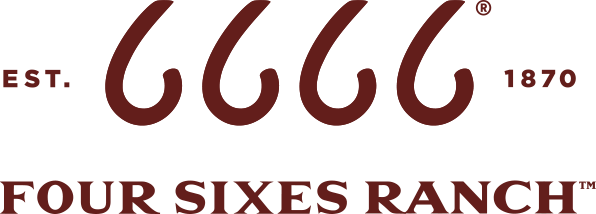The Agriculturist- College of Agriculture Sciences and Natural Resources Texas Tech University
Story by JoAnna Elliot
Photo by Andrew Hancock
Legendary ranches are built on grand foundations. This holds true for one iconic Texas ranch, the Four Sixes (6666). To sustain their legacy, the ranch continuously looks toward new ways to improve their operation and are open to exploring new markets.
As the world wrestles with challenges of possible climate change and adverse legislative bills, new opportunities emerge for agriculture. Many are concerned the earth is developing a warmer temperature caused by the emission of greenhouse gases. The theory provides a topic for hot debate.
On June 26, 2009, the U.S. House of Representatives passed the American Clean Energy and Security Act (H.R. 2454). If passed by the Senate and signed into law, the act has the potential to drastically alter the lives of Americans.
A controversial section of H.R.2454, cap-and-trade, is a program designed to limit the amount of pollutants released into the atmosphere by putting a “cap” on the amount of greenhouse gases discharged. In order to enforce this, the federal government will regulate the number of allowances that factories, refineries and power plants receive annually. If a factory produces more pollutants than the government allows, the emitter may purchase allowances from someone with a surplus, for example the 6666 Ranch, creating the “trade.”
Many lawmakers are concerned with potential outcomes from possible implementation of H.R. 2454. By regulation of factories, power plants and refineries, operational costs will increase drastically, and will increase the price of goods and services produced in America.
A national renewable energy advocacy organization, 25x’25, is working to diversify our nation’s energy portfolio and improve our environment and our rural economy. The organization’s vision is for 25 percent of the nation’s total energy needs to come from renewable resources by 2025. Southern Regional Facilitator Brent Bailey said farmers and ranchers are in a position to contribute toward the nation’s energy solutions by growing bioenergy feedstocks and by involving themselves in the carbon credit market.
“It is beneficial for farmers, ranchers and land owners to look at the opportunities this is creating,” Bailey said.
Bailey said the policy is not popular among agriculturists and many think the cap-and-trade program penalizes the U.S.
The National Cotton Council completed an analysis on direct energy costs related to production, ginning, marketing and yarn spinning. They found that every 10 percent increase to input costs will increase costs by $175 million for the overall industry, placing U.S. cotton and cotton products at a severe disadvantage in international markets. According to their analysis, this legislation will drastically increase the price of fuel, power, equipment, fertilizer, feed and other production costs used within agriculture. Managing thousands of acres, the 6666 Ranch is looking toward innovative methods to cut and offset costs.
Placed in the heart of big ranch country, the 6666 Ranches are located in Guthrie and Borger, Texas. The historic 142-year old ranch has been a leader in cattle and horse production throughout the southwest region. Though deeply influenced by tradition, the 6666 Ranch looks toward modern opportunities to supplement their operation as well as innovative methods to reduce and offset costs.
General Manager Joe Leathers has taken proactive measures to prepare for the new age of agriculture. Leathers, who strongly opposes cap-and-trade, invested his time in the completion of an application for the ranch to be accepted in a carbon credit pool. Even though he disagrees with the principles of cap and trade, he wants to sell carbon credits on the exchange to offset the costs H.R. 2454 could impose if put into effect.
“As it turns out, ranchers have an opportunity to maybe offset the cost of cap-and-trade through carbon credits, and therefore maybe we can stay in business,” Leathers said. “It’s actually one of the few times that we, as ranchers, have an opportunity to be on the offensive instead of the defensive.”
The ranch is rich with native grasses, natural creeks and manmade tanks that spread across thousands of acres of rangeland. Within the past few decades, the ranch has concentrated its efforts toward brush control and herd management. The majority of the ranch’s acreage maintains a grass ground cover, ideal for sequestration of carbon.
Leathers said that he was interested in involving the ranch in the carbon credit market because it created an opportunity to capitalize on previously implemented programs, as well as offset costs that the cap and-trade bill may impose.
Leathers also expressed his concern of the public’s skewed perception of farmers and ranchers. Even though Leathers thinks the idea to place clean air on a market is far-fetched, he feels involving the ranch is a scientific way to show the nation and environmental agencies that agricultural activity is beneficial to the environment.
For now, cattle ranches are prohibited from selling carbon credits due to the theory of methane emission from cows contributing to global warming. However, if cap-and-trade is put into effect and ranchers are given the opportunity to sell their carbon credits through an exchange, selling their credits may provide an opportunity for ranchers to capitalize. Until then, the 6666 Ranch will hold on to their credits.
In October 2008, Leathers and Laramie McEntire, ranch management consultant, created a ranch management plan. The plan includes forage inventory, herd management and drought plan information, with elaboration on water availability, wildlife activity and vegetative cover.
With GPS technology provided by the Natural Resources Conservation Service, Leathers, McEntire and NRCS employee, Steve Drennan, mapped the entire ranch. The trio created detailed records to describe each pasture on the ranch and determine eligibility to be accepted into the carbon credit pool. A verifier from the Chicago Climate Exchange traveled to the ranch and confirmed the claimed total of credits to be accepted into the pool.
“The NRCS gives producers digitized maps with detailed range site descriptions,” Drennan said. “The basic mapping includes grazing units, total acreage, soil data and amount of foliage produced in a normal growing year.”
Drennan clarified that the NRCS is not directly involved in the carbon credit market. They provide the GPS mapping to any producer who requests the service, whether or not it is used to measure carbon credit availability. Drennan said he has provided the mapping services to five producers within King county that are using the information to apply to a carbon pool.
As our nation looks toward innovative methods to create a more sustainable environment, new doors open for agriculturists to contribute toward new energy solutions. With the dawning of a new age of agriculture, farmers and ranchers alike must look toward each day in anticipation of the uncertainties. With organizations like 25x’25, agriculture has the opportunity to continue to thrive; however, they must follow leaders like the 6666 Ranch and fight a proactive battle.
© 2011. Texas Tech Department of Agricultural Education & Communications












